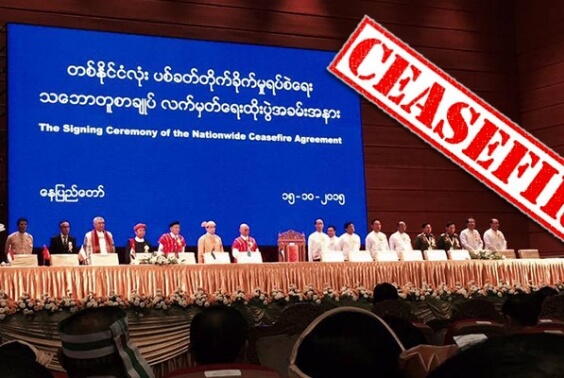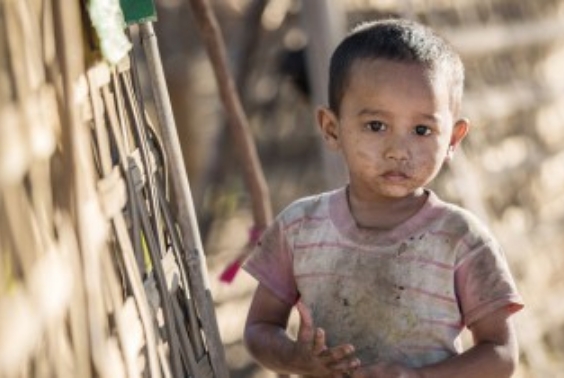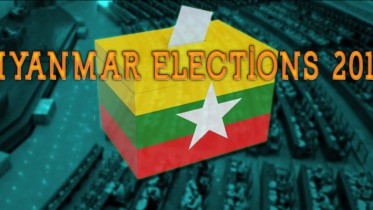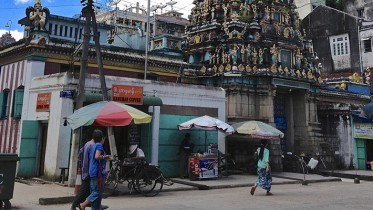- MYANMAR
The Rohingya Issue in Myanmar
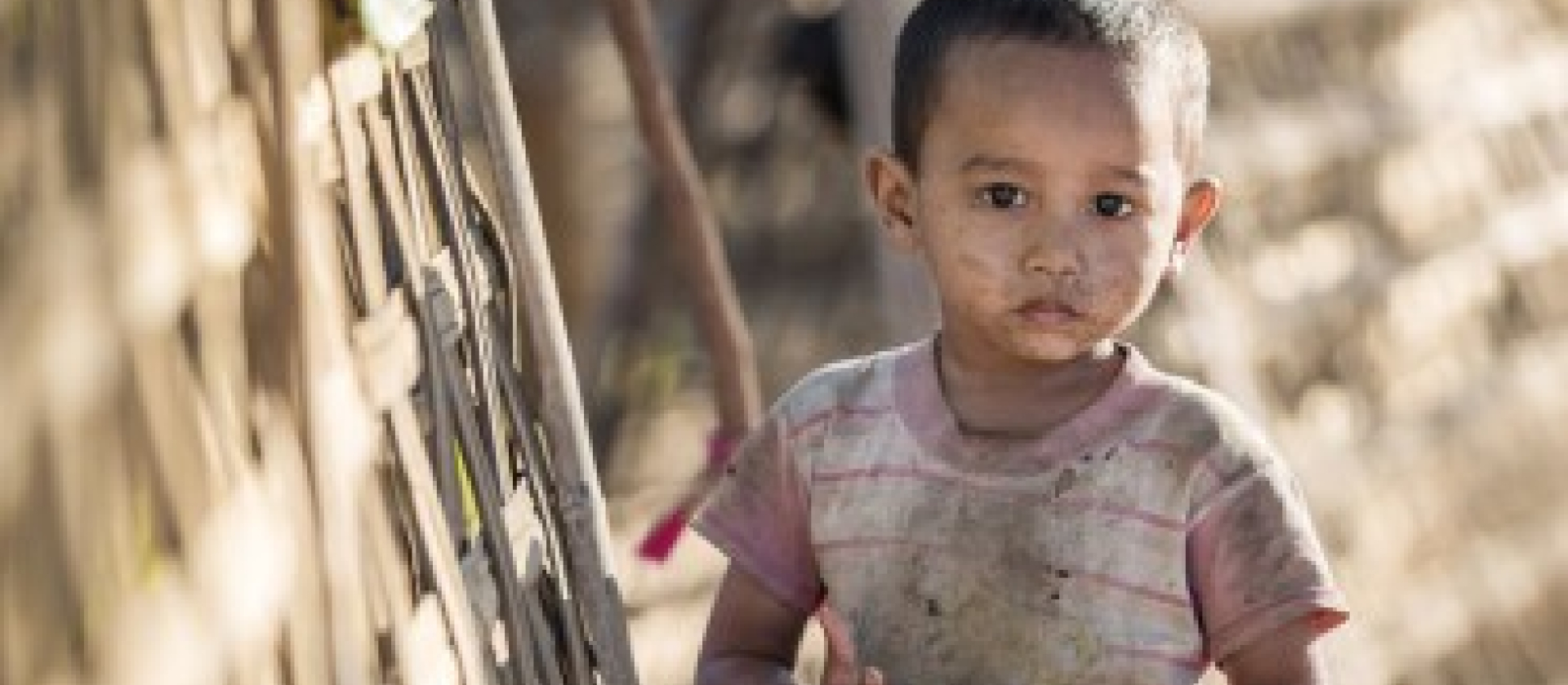
1. The Current Situation:
The Rohingya are a Muslim ethnic minority group living in the northwest part of Rakhine State in Burma (Myanmar). Rakhine State is situated on the western coast of Burma, and its northwestern part shares a border with neighboring Bangladesh across the Naaf River. The Rohingya came to be internationally known through their mass outflow to Bangladesh as refugees, which took place twice—the first of which took place towards the end of the 1970s and the second at the beginning of the 1990s. While the majority of Rohingya refugees later returned to their homeland, there are still several refugee camps remaining in the area between Teknaf and Cox’s Bazar in the southernmost part of Bangladesh. Today, there are a number of Rohingya people who were born and grew up within these refugee camps.
Following the second mass refugee outflow at the beginning of 1990, border security was strengthened by both the Bangladesh and Burma governments, which made it tough for the Rohingya to flee to Bangladesh via land routes. Therefore, they gave up using land routes and instead began taking sea routes using ships, aiming to reach Malaysia and Indonesia.
In May 2015, an incident occurred in which thousands of Rohingya refugees on several wooden boats became stranded and drifted at sea, as authorities around the region refused to take them. This news shocked the world. Against the backdrop of this incident was the existence of a pernicious refugee “business.” An illegal organization ran by Thais targeted the Rohingya, collected money from them and secretly let them board wooden boats sailing towards the southern part of Thailand. After landing, they led the Rohingya to Malaysia and Indonesia for profit. However, the Government of Thailand cracked down against such illegal activities and placed severe restrictions on the organization’s movements, which led to cases where the organization killed or abandoned the Rohingya as they were too much trouble. Inevitably, the human trafficking sea route also became restricted and the situation developed where refugees were left stranded and drifting on boats.
The adamant refusal to take the refugees by the authorities of Thailand, Malaysia, and Indonesia, the first choice countries for the refugees to land, made the problem more serious. However, following an international conference on 29 May 2015, in which 17 countries participated and two countries sat as observers, Malaysia and Indonesia changed their position and accepted the responsibility for the protection of the refugees with a one-year time limit. This, of course did not resolve the issue at all. Rather, all the important issues associated with this incident have only been postponed.
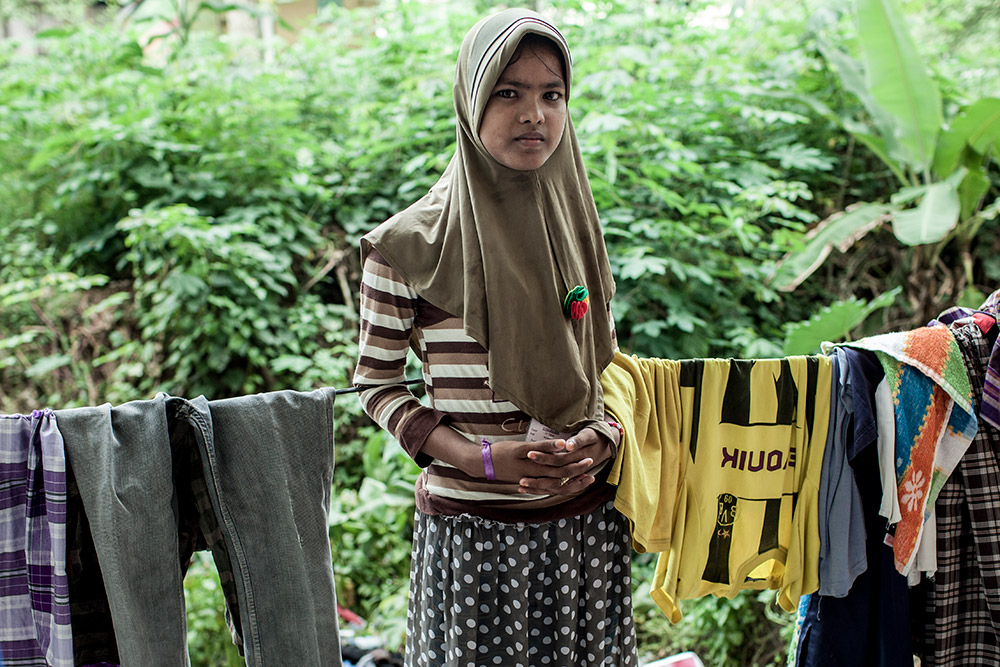
Firstly, none of the countries involved are willing to take responsibility for this issue. It is not difficult to imagine the difficult situation for these countries in facing “unwanted” refugees. Yet even taking into account of this, the responses to the drifting refugees by Thailand and Malaysia, where mass murder of the refugees by human trafficking organizations took place, has been too cold-hearted in view of the weight of the responsibility that should be assumed. Secondly, the sense of irresponsibility by the Burmese government, which should be shouldering the bulk of the responsibility, is highly prominent. Burma initially was not even intending to participate in the above-mentioned international conference and took the attitude that, “this is a human trafficking problem and is nothing to do with our country.” Later, they realized that such an attitude would not be accepted by other countries and decided to participate in the conference. However, Burma insisted that other participating countries not use the name “the Rohingya,” persistently sticking to their claim that, “the refugees drifting at sea are Bangladeshi people,” and flatly refused to acknowledge their responsibility.
The attitude to exclude the Rohingya taken by the Burmese government has been supported by public opinion in the country since the 1970s. Although the government temporarily recognized the existence of Rohingya people after Burma became independent (see the later part of this paper), the Burmese government has maintained the view of them as “illegal immigrants” from Bangladesh for over 50 years. The government does not recognize them as indigenous to Burma, nor does it give them nationality, and continues to use the name “Bengalis” (Bengali in Burmese pronunciation). Meanwhile, the government of Bangladesh also does not recognize the Rohingya as their people and claims that they are an ethnic group belonging to Burma. In this way, the Rohingya have been excluded from both countries.
Burma’s anti-Rohingya sentiment stems from the following facts; the Rohingya people have a darker skin color and a chiseled features, they do not speak Burmese fluently, and above all, that they are Muslims. In addition, the Rohingya are seen as people who believe in a particularly conservative form of Islam, and this is regarded as the “evidence” that they are “Bengalese” and “illegal immigrants.”
When the Rakhine Buddhists attacked the Rohingya in June 2012, the Burmese government built a quarantine space similar to a ghetto in Sittwe in northern Rakhine State in order to “protect” them, and kept many Rohingya people confined there. Other Rohingya people were also strictly prohibited to move outside of the northwest area of Rakhine State. This condition still continues as of July 2015, and as a result the future prospects for the Rohingya people are not only restricted but they also cannot escape from the harsh living conditions where they suffer from malnutrition and poor sanitation, and where their children are unable to receive education.
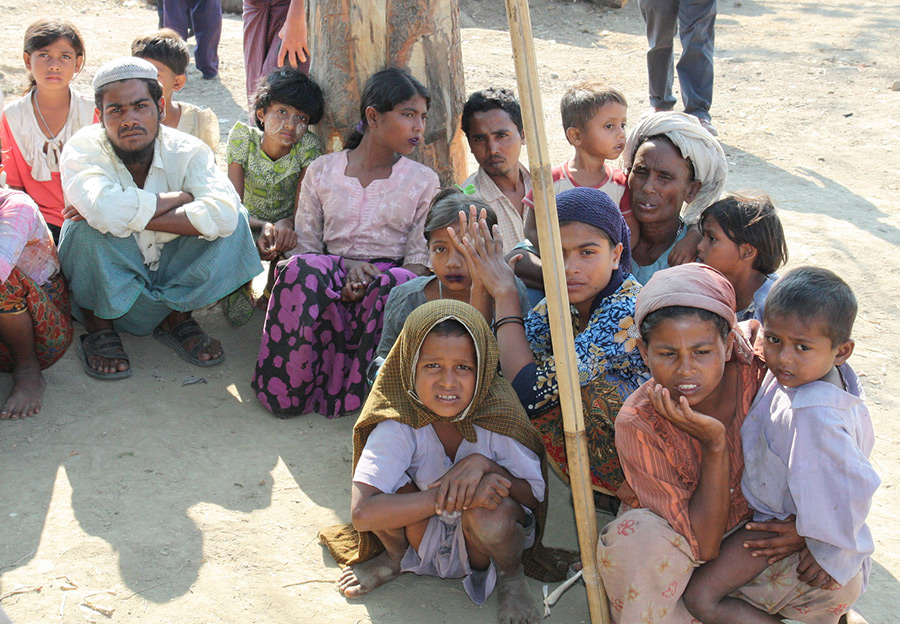
2. The History of the Rohingya:
Who are the Rohingya as an ethnic group and what sort of history do they have? They are indeed an ethnic group with a mysterious background, and this section will look into their history to the extent possible.
The Rohingya as a “name” appears in documents and historical materials only from1950. Towards the end of the eighteenth century, in 1799, Dr. Francis Buchanan-Hamilton, a Scottish doctor working for the British East India Company, recorded that there were people called “Rooinga” in Rakhine, when he visited the then Kingdom of Burma (the Konbaung Dynasty) via the Bengal region. However, it has not been proved as to whether these “Rooinga” were the same group as the present Rohingya. Dr. Buchanan-Hamilton was a doctor with many talents, but his specialty was medicine and he was not trained as a linguist or ethnologist. Since the name “Rooinga” does not appear in any other relevant literature written by westerners other than him, the validity of his claim is difficult to judge.
Meanwhile, Rohingya intellectuals who are scattered around the world provide comments on their own history going back as early as the eighth century. However, it seems implausible to think that Islam, which was established in the Arabian Peninsula in the seventh century, reached a distance place such as the west coast of Burma in a mere100 years. Islam reached India only in the ninth century.
Later, in the Arakan Kingdom (the Mra-U Dynasty [also spelt Mrauk-U Dynasty], 1430-1785), which flourished from the first half of the fifteenth century until the late eighteenth century, it is known that Muslims lived together with Buddhists. Whereas this kingdom was a Buddhist dynasty, the first to the eleventh kings were tolerant of Islam and Muslims to the point that they introduced themselves using their Islamic names when engaging in trade with Muslim merchants at the Bay of Bengal. Historical records also confirm that there were Muslims with titled positions within the royal palace. Muslim people within the kingdom mainly consisted of the descendants of people who had been brought in as prisoners as well as mercenaries and their families. During this period, no religious conflict between Buddhists and Muslims were observed. Incidentally, the capital of this kingdom was called Mrohaung, and the previously described Rohingya intellectuals claim that “Rohang,” the etymology of Rohingya, originated from this name.
Following the collapse of the Arakan Kingdom in 1785 due to Burmese Kingdom’s aggression, the Barmar people governed the land for the following 40 years, while Muslims who did not appreciate this change fled to the Bengal side (some Rakhine Buddhists also fled). Later, however, the situation changed completely. There was an outbreak of the First Anglo-Burmese War in 1824. When the Rakhine area became a British colony following the defeat of the Burmese kingdom in 1826, Muslims started migrating on masse from the Bengal side, which led to their resettlement through several generations.
This sudden inflow of immigrants destroyed the coexisting relationship between Rakhine Buddhists and Muslims. By the twentieth century, the confrontation between these two groups was gradually becoming more serious. In Burma, the whole of which became a British colony in 1886, many immigrants originating from India also flowed into the capital Rangoon (Yangon). Regardless of the status of these people, Hindus or Muslims, they came as lower class workers, and most came as short-term workers planning to return to India in three to four years. In contrast, the Muslims who immigrated to the northwest of Rakhine settled there and indigenized themselves. This was the cause of creating gradual but serious frictions between the Muslims and the Buddhists.
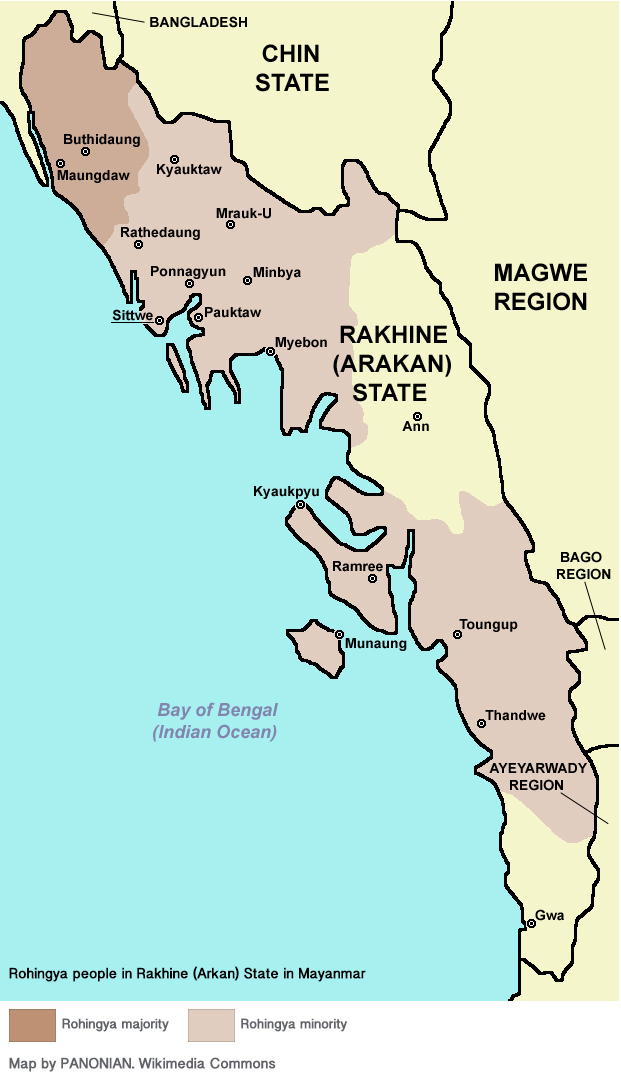
The conflict between Buddhists and Muslims was further exacerbated during the Second World War. This was because the Japanese Army who invaded this land armed some Buddhist Rakhines and let them fight against Muslim forces, which were armed by the British Army. The fight between the two groups developed into a “religious war,” at a separate level from the battle between Japan and Britain, and the conflict between Buddhists and Muslims in Rakhine ended up reaching an irreparable point as a result of this.
After the war, Burma gained independence in 1948. However, the northwest part of the Rakhine State, which shares the national boarder with the then East Pakistan (present-day Bangladesh), remained as a region beyond the full control of the central government until the beginning of the 1950s. Bengalese Muslims who suffered from food shortages in East Pakistan flowed into Rakhine, intensifying the conflict between Buddhists. This new cluster of immigrants included an armed rebel group called the Mujahideen led by Pakistanis (which was suppressed by the Burmese Army at the beginning of the 1960s). During this period, the Rohingya came forward to declare that “Rohingya” was the generic term for the Muslim living in the region.
Today, the oldest document that includes the name Rohingya that can be traced is a letter from the Rohingya addressed to Prime Minister U Nu in 1950. They handed a two-page letter under the name of “the Rohingya Elders of North Arakan” to the Prime Minister when he visited Maungdaw (a town with a concentrated Rohingya population) in the northwest part of the Rakhine State. Possibilities of the name of Rohingya being used prior to this letter cannot be denied, but so far, reliable historical sources on this matter have not been found. Official documents (administrative documents) produced by the British side, which was the suzerain state of Burma at that time, almost exclusively contain the term Chittagonians, and neither Rohingya nor any names whose pronunciation (spelling) was close to Rohingya appear in these documents.
In fact, along with the ambiguity in the timing that these people began using the name Rohingya, it is also unclear how the three historical layers of Muslims in this region—residents since the Arakan Kingdom period, immigrants from Bengal during the British colonial period, and new immigrants from around the period when the country gained independence—mingled and for what reasons they began to hold the Rohingya identity. Without solving this “mystery,” however, the majority of public opinion will continue to label them as “illegal immigrants from Bengal.” This is because the Burmese public focuses only on the third group, “the layer of Muslim immigrants” who came in the period immediately after the war. To the Burmese public memory, it was as if there had been no Muslim immigrants prior to the influx of this third group.
Interestingly, a fact that is likely to have been forgotten is that the the Burmese government intended to accept the Rohingya for a certain period of time following its independence. In the post-independent Burmese Parliament (House of Representatives), there were two Muslim members of parliament elected from the Akyab north constituency in northern Rakhine. Their names were Sultan Ahmed and Abdul Ghaffar, and they were active as members belonging to the Anti-Fascist People’s Freedom League (AFPFL). There is no evidence to suggest that these two Muslim members identified themselves Rohingya. Nonetheless, in part because they were members of the ruling party, the Burmese government accepted their claim and planned to make the Mayu region, which includes Buthidaung town and Maungdaw town where many Rohingya people lived, under the central government’s direct to prevent the Buddhist Rakhines from intervening in order to protect the Muslims in the northwest part of the Rakhine State. In addition, during the late 1950s, the government also permitted shortwave radio broadcasting in the Rohingya language (to be precise, the Chittagong dialect of Bengalese language) during a designated time of the day.
These considerations for the Rohingya disappeared in 1962 when the Burmese Army took power from Prime Minister U Nu in a coup. The new government aggressively promoted the centralization of power under the slogan of the “Burmese Way to Socialism” and escalated the logic of excluding the Rohingya. The Buddhists within the country supported this approach. Burmese nationalism which emerged during the British colonial period was developed by the middle class Barmar people, and it emphasized the “Burmese language” and “Theravada Buddhism,” which had continued to have a significant influence on many Burmese nationals in post-independence Burma. For this reason, people who did not speak the Burmese language and did not believe in Theravada Buddhism were looked down on by Barmar Buddhists, the majority, and the atmosphere in which these people were targeted for exclusion became established in the country. The anti-Rohingya sentiment became intensified in particular due to the fact that Rohingya consisted of immigrant Muslims, and this situation made it more difficult to resolve the Rohingya issues.
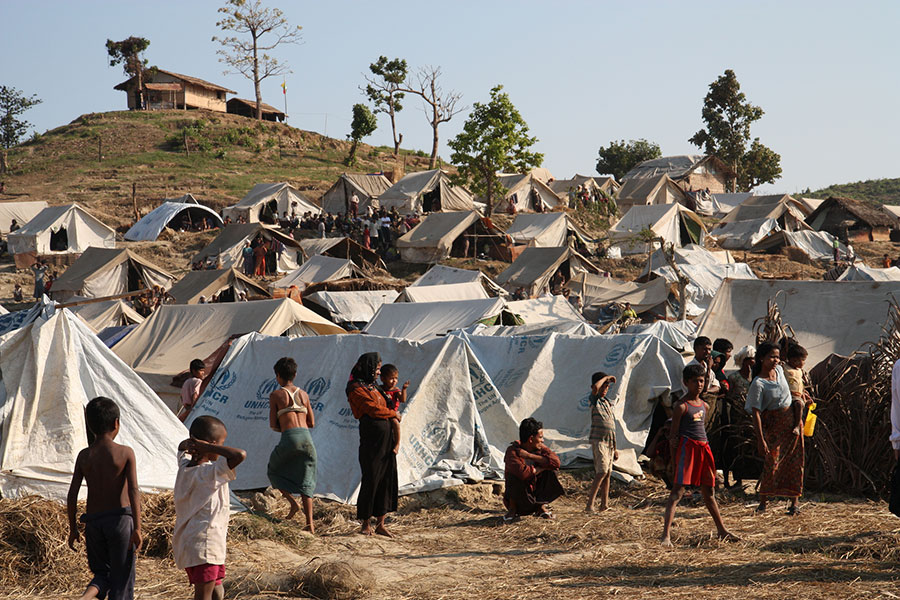
3. Clues to Resolution:
The exclusive public opinion toward the Rohingya within Burma originated from the anti-Indian immigrant sentiment, which developed during the British colonial period. On top of this, the Buddhist side’s fear, which assumed that the Muslims were trying to expand their population in Burma, overlapped with this anti-Indian immigrant sentiment, and racist feelings based on their skin color and the different look on their face further hunched over it. It is most probably impossible to erase these feelings of fear and sentiments from the country in a short period of time. It requires time-consuming and patient efforts, as the process is like disentangling a complex web of threads.
Ironically, following the change in the political system from the military regime to a “civil administration” in March 2011, freedom of speech was eased and religious discourse also became “liberalized.” In this new environment, some extremist Buddhist monks began conducting sermons attacking Islam (de facto hate speech). Previously under the military regime, this type of sermon was regarded as a disturbance to peace and monks were even imprisoned for such acts. However, this is no longer the case in the present Burma. While the political use of religion is prohibited in the constitution, there is little action taken today against these sermons, which are almost the same as hate speech. Some Buddhists, influenced by these malicious preachings, sometimes engage in dangerous actions such as physically attacking Muslims. Conscious of the majority of public opinion, Burma’s domestic media also hesitate to report critically the issue of anti-Islam sermon conducted by monks.
The more we look at the reality, the more difficult it becomes to find the clue to the fundamental solution to the Rohingya issue. The United Nations High Commissioner for Refugees (UNHCR) and several other international NGOs, which recognize this issue as a genuine human rights issue, are taking actions to provide material support for Rohingya people. However, the reality is that even these actions serve to antagonize the majority of Buddhists within Burma.
Meanwhile, it is also true that steady efforts towards the formation of civil society have began at a different level to the political activities in this country. It is like a candlelight, which is faintly shining far ahead in the darkness. Nonetheless, although only little by little, dialogues between ethnic groups as well as religions, and positive moves towards mutual reconciliation of the conflict are showing signs of spreading these efforts among the citizens. It is also a movement to liberate the people from the closed (exclusionary) nationalism blanketing this country.
For example, there is a movement developed by Min Ko Naing, who was a former student movement leader and a survivor of the long-term prison life as a political prisoner. At the national pro-democracy movement, which occurred in 1988, he was active as a charismatic leader of student movement and had gained national level popularity next to Aung San Suu Kyi. Because of this, the military regime thoroughly contained Min Ko Naing by imprisoning him as political prisoner for a total of 20 years. During the imprisonment, he continued his indomitable resistance consistently, until he was released finally in 2012. However, since the release he has not been involved at all in party politics. Instead, he has been in gentle cooperation with many people and organizations towards forming civil society in Burma as a civic activist to this day, and putting his efforts in the development of a national movement seeking the revision of the constitution, in attempts to hold dialogues between religions and ethnic groups, and in a wide range of cultural activities.
Activities led by Lahpai Seng Raw, a woman from the minority ethnic group Kachin, are also worthy of attention. She is the founder of Burma’s largest NGO called the “Metta Development Foundation” and, since the military regime she has been committed to providing vocational training for income generation and establishing as well as operating kindergartens for minority ethnic groups in the national border areas. In addition, she has also been involved in supporting activities for the Internally Displaced Persons (IDP) and refugees. In 2013, she was awarded the Ramon Magsaysay Award, which is considered an Asian equivalent to the Nobel Peace Prize. She is one of the activists making steady efforts in forming civil society in Burma whilst maintaining a certain distance from party politics, as in Min Ko Naing.
In contrast to Aung San Suu Kyi who intentionally took path to enter the world of party politics, the image of persons such as Min Ko Naing and Lahpai Seng Raw aiming to form civil society outside of party politics and continue to make steady efforts based on citizens’ perspectives is noteworthy in the “political landscape” in modern Burma. No matter how time-consuming the work is, we hope that someday we will be able to find a clue to the solution of the Rohingya issue to emerge from such efforts. Unless the citizens of Burma are released from its closed nationalism, this issue will not move towards a resolution.

View Henri Ismail’s Rohingya in Aceh photos in this slideshow (thanks to Kyoto Review of Southeast Asia)
See more of Henri Ismail’s photos on his Flickr page: https://www.flickr.com/photos/henri-ismail/

Professor, Faculty of Global Studies, Sophia University, Tokyo




